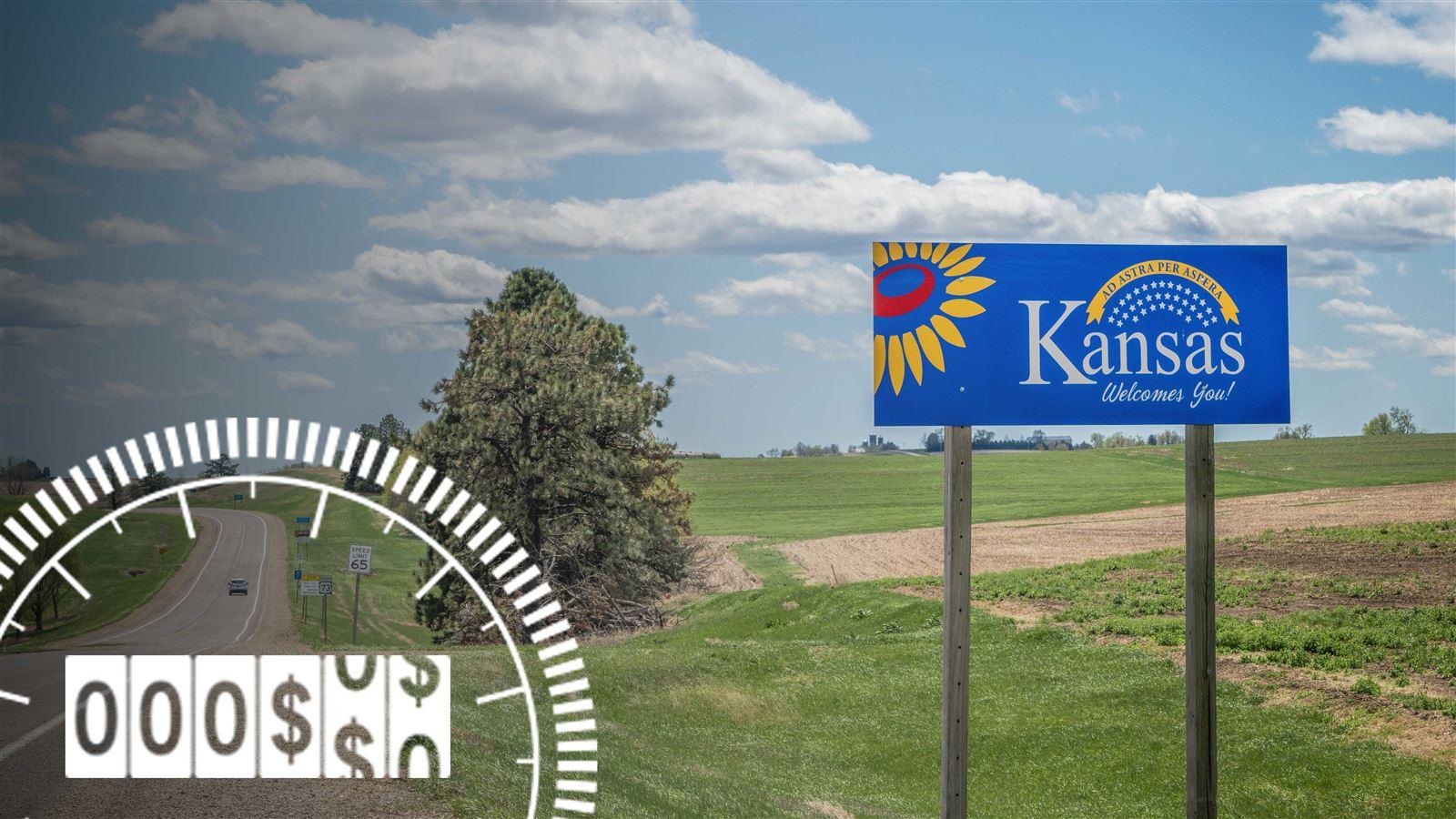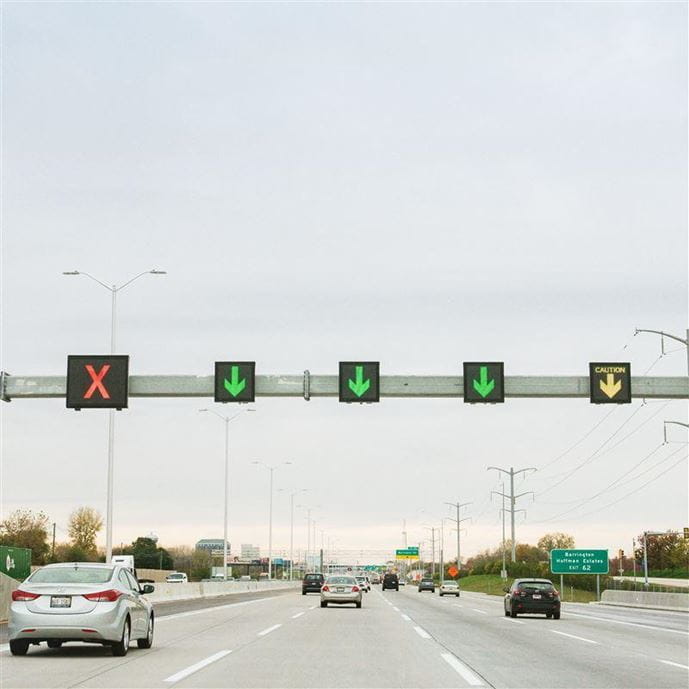Human-Centered Design Approach Helps Test RUC Policy in Kansas
The road usage charging (RUC) model has been tested since 2007; pilots and operational programs have demonstrated that implementing reliable alternative funding systems is technically feasible. However, simply addressing that feasibility is no longer enough. With increased focus on user experience in the consumer world, people also expect user-friendly and accessible state-run solutions that address their needs and are easy to comply with.
“With the first RUC pilots in states like Oregon, we were building a system from the ground up and needed to ensure we had a robust technical solution in place so that states considering RUC and their residents would trust it as a new revenue collection mechanism,” says CDM Smith’s service design and innovation lead Roshini Durand. “The priority was to develop a reliable system that would record road usage data and compute charges accurately. The focus used to be more on the system and less on the users themselves. In fact, users would almost come as an afterthought,” she says.
Durand says this meant that sometimes teams would design a pilot with features or policies that missed the mark because they didn’t reflect actual needs and behaviors. “By the time we engaged users in pilot tests, it would be too late to optimize the pilot to gauge policy acceptance and implementation preferences efficiently. With human-centered design techniques, we have learned to involve users early in the design process to hear directly from them and build services that they can easily use and eventually adopt,” she says. With this approach, teams can focus pilot participants’ attention less on the kinks of the system and more on the policy and implementation choices that states wanted to test. “We’re able to take it a step further and mitigate risks so we can ultimately implement policies and systems that reflect their residents’ needs and priorities,” she says.
Recently, the Kansas Department of Transportation (KDOT) partnered with CDM Smith to investigate the state’s transportation funding future to bring a Midwest perspective on RUC policy to the national RUC conversation and specifically study impacts on rural and agricultural communities.
A human-centered design approach to obtain valuable public perceptions on policy
KDOT leadership wanted perspectives from their residents on RUC and other transportation funding mechanisms to be heard, respected, and incorporated into the RUC pilot design. The team collected and synthesized viewpoints of individuals and businesses in Kansas and used those preliminary insights to decide which features and choices needed to be tested with users in the Kansas Midwest RUC pilot.
“One of the reasons we do human-centered research is to give states the opportunity to start from their own residents’ needs and not inherit assumptions from other state’s research. This allows them to perform research that is closer to their state’s needs and is as unbiased as possible,” says Jeff Doyle, CDM Smith transportation policy expert. Kansas started studying RUC later than other states that set the pace with standards that worked for them. If Kansas was ever going to implement a RUC system, they needed to have their voices heard—what Kansans cared about informed key service features to prioritize and what they didn’t care about would avoid investments in choices that are not relevant. “So our first step was putting the legacy standard aside and doing our own research so we could build a pilot design specific to this state,” Doyle explains.
CDM Smith engaged Teague as their design partner to conduct field research. The project team worked with KDOT stakeholders to first define the critical aspects of the research effort, including: ‘What research themes should we prioritize?’, ‘Who should we engage in the research?’, and ‘How should research activities be designed?’. As a result of this research planning process, 41 participants from Kansas were selected to participate in research activities specifically designed for Kansas. Research participants were asked to design their ideal version of a RUC policy for Kansas step-by-step. While the team understood that the project participants wouldn’t be experts at policy design, they knew they’d be experts at what they wanted. The intent of this “build-your-own-policy” approach was to better understand underlying assumptions and concerns that motivated user choices. These are generally hard to surface with more traditional research techniques such as focus groups or surveys; they’re best articulated through observation of people’s behaviors and reactions as they interact with prototypes that reflect how policies or solutions might be implemented.
A custom-built path forward for Kansas
Following a thorough analysis of the field data research, CDM Smith built on the qualitative data collected during the field research and provided KDOT with a comprehensive report that informed a potential RUC program in Kansas based on the profiles of different user groups and their dispositions toward RUC policy. KDOT integrated these research findings to design a RUC pilot program that they deployed in mid-2024 to gather feedback from an even broader set of Kansans on the specifics of how a future RUC program might be implemented.
“One of the biggest success factors of this research for KDOT is that we didn’t deliver a cookie-cutter solution. We didn’t cut and paste a solution from Oregon, Utah or Virginia and serve it to Kansas. Instead, we invested in robust user research to design the Kansas Midwest RUC pilot, which helped KDOT mitigate risk by laying the groundwork for a pilot that would meet the needs of road users in Kansas at the outset,” explains Durand.
CDM Smith ran the resulting RUC pilot program in partnership with Burns & McDonnell for communications support, and involved technical vendors GeoToll and Trinnex who supported the pilot solution deployed with their technology platforms. The pilot engaged close to 570 participants and generated findings and conclusions that are documented in the 2024 Kansas Midwest RUC Pilot Report final report that can be found on KDOT’s IKE website here.

One of the biggest success factors of this research for KDOT is that we didn’t deliver a cookie-cutter solution












